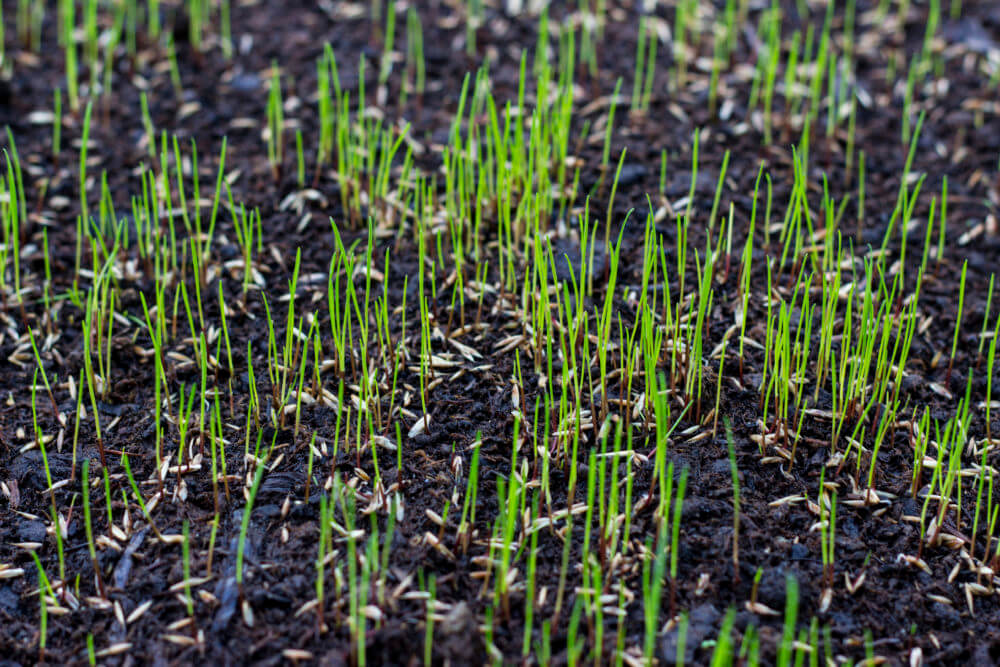Many lawns need to have sections reseeded in the spring due to plow and ice damage as well as winter kill. While the intentions are good, there are some serious pitfalls that should be taken into consideration prior to spring seeding.
Soil Temperature
Cold soil, even if perceived bare and ready, will not allow seed to germinate, particularly if thrown on the original lawn surface without added loam. This is common in April since soil temperatures don’t generally rise to the minimum level (in the 50°s) needed to allow decent germination. Seed left on the original lawn surface is also prone to dry out before germination can even begin.
Crabgrass
A second pitfall to spring seeding is the common use of crabgrass-prevention products, that not surprisingly, also prevent good seed from growing! However, on a positive note, there is a great product called Tenacity that allows for both crabgrass suppression and spring seeding! We provide this popular service because so many of our clients request crabgrass control with plans for reseeding, either themselves or by our technicians.
Seed Variety
It is also important to consider the selected seed variety, (see blog post http://www.mrgrassblog.net/spring-seeding/ for the importance of choosing the correct seed for the site). While ryegrass will be the first to germinate in a spring seeding scenario (7-14 days), bluegrass takes a full month. If bluegrass is the primary seed choice sowed in early May, you would certainly not see new growth until Memorial Day weekend or a dash later. This scenario gives crabgrass an ideal opportunity to germinate and overrun a non-treated seed bed.
Diseases
Another potential complication for new grass is an early summer of hot and humid weather. These conditions are ideal for diseases, such as Pythium or brown patch disease that can blight or kill a new lawn area literally overnight. Precautionary disease and compost tea sprays can help combat against these diseases.
Steps for Successful Spring Seeding
Spring seeding should generally be done in the month of May, or early June at the latest, with particular attention to early weed mitigation (Tenacity), having a topcoat of fresh loam to create a suitable seeding bed, and scheduling a secondary spray for crabgrass in late June or July. I thoroughly endorse a secondary crabgrass spray since any crabgrass that does end up germinating (and it will happen) will outgrow and compete with the new lawn area, sacrificing optimum results. A disease spray and a compost tea application are also excellent proactive treatments to help a new grass become established.
Fall is Best
In my experience, spring seeding is best left to small repairs, leaving full renovations or substantial repairs for late summer and fall. This is an ideal time for lawn work due to warm soil and the inability of crabgrass to germinate and compete with the new grass. See blog post http://www.mrgrassblog.net/fall-lawn-seeding-in-nh-vt/ about fall seeding.


